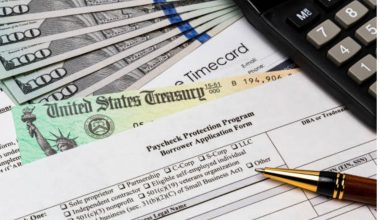The accounting equation is calculated using the balance sheet. They demonstrate that the financial accounts are balanced and that the double-entry accounting system is functional. The assets of the corporation equal the total of its liabilities and equity. This article defines an expanded accounting equation, its calculator, and its proven formula. We will further explain how it works, its relevance, and the working capital difference.
What Is the Accounting Equation?
The accounting equation is a formula that indicates the entire assets of a corporation are equal to the sum of its obligations and investors’ equity (Assets = Liabilities + Equity). The unambiguous relationship between a company’s liabilities, assets, and equity is the foundation of double-entry accounting. The balance sheet is the source of a company’s accounting equation numbers. Investors’ equity, stockholders’ equity, or owner’s equity are all examples of equity.
If you know the first two terms of the basic accounting equation, you can solve the third. For example, Total Assets – Total Liabilities = Total Equity, for example, or Total Assets – Total Equity = Total Liabilities. The function of a negative sign is to move a term from the right to the left side of an accounting equation.
The Statement of Financial Position or Statement of Financial Condition is a name that means the same as the Balance Sheet.
What is Double-Entry Accounting (Bookkeeping)?
In double-entry accounting or bookkeeping, total debits on the left side must match total credits on the right side. This is true for every business transaction and journal entry.
The monthly trial balance is a list of account names from the chart of accounts accompanied by total account balances or amounts. Before publishing transactions to the general ledger for the accounting cycle, total debits and credits must be equal. During the 14th century, merchants in Italy began using double-entry bookkeeping as a manual system. Furthermore, accounting software is a double-entry accounting system that generates the trial balance automatically. At the bottom of the report, there are columns with total debit and total credit transactions.
What Is the Expanded Accounting Equation?
The expanded accounting equation is developed from the standard accounting equation and depicts in greater depth the various components of a company’s stockholders’ equity.
By separating equity into its component elements, analysts can have a better understanding of how revenues are utilized, whether as dividends, reinvestment in the company, or cash retention.
How the Expanded Accounting Equation Works
Sometimes, analysts desire a deeper understanding of the shareholders’ equity of a corporation. In addition to assets and liabilities, which are part of the basic accounting equation, the following elements are part of stockholders’ equity:
#1. Contributed capital
This is the capital contributed by the company’s founding shareholders (also known as paid-in capital).
#2. Beginning retained earnings
Retained earnings are the earnings from the prior period that were not dispersed to stockholders.
#3. Revenue
This one is everything the company has through its continuous operation, either in service or in production.
#4. Expenses
These are all the fees that leave the firm for its swift operation.
#5. Dividends
You subtract these because they represent the profits spread to the firm’s stockholders. Contributed capital and dividends demonstrate the impact of stockholder activities. The difference between revenues and profits earned and expenses and losses incurred represents the impact of net income (NI) on shareholders’ equity. Overall, the extended accounting equation is beneficial for determining how the stockholders’ equity of a company fluctuates from period to period.
Some nomenclature may differ based on the entity structure type. “Members’ capital” and “owners’ capital” are typical terms for partnerships and sole proprietorships, respectively, whereas “distributions” and “withdrawals” are alternative terms for “dividends.”
What is the 4 Basic Rule for Solving an Equation?
Adding, subtracting, multiplying, and dividing are the four methods available to us for solving equations with a single step. When we add the same number to both sides of an equation, we ensure that those sides remain equal to one another. In an equation, if we take away the same number from each side of the equation, the two sides will continue to be equal.
What is Accounting Equation Very Short Answer?
According to the accounting equation, the total assets of a company are equivalent to the sum of the company’s liabilities and the equity held by its shareholders. The straightforward relationship that exists between a company’s assets, liabilities and equity is regarded as the system’s foundation when it comes to double-entry accounting.
Who is the Father of the Double-Entry System?
- Luca Pacioli
Luca Pacioli, who lived around 1447 and died around 1517, is credited with being the first person to publish in-depth information on the double-entry method of accounting. He was a Franciscan friar in addition to being a mathematician, and he worked with his friend Leonardo da Vinci on a number of projects (who also took maths lessons from Pacioli).
Expanded Accounting Equation Formula
Anyone who is learning to account or has already studied starts their basics from the accounting equation. The reason for this is that this is the accounting equation, which is the essential foundation of the double-entry accounting system. It is also known as an accounting equation balance sheet since it gives us the relation between balance sheet elements, i.e., assets, liabilities, and equity.
Assets are basically the items that a firm possesses. For example, cash, inventory, property, machinery, etc. all form part of assets.
Liabilities are basically the money that a company owes to others. For example, payables, debt, etc. are a sort of liabilities.
Equity is the holding of the stakeholders in the firm. So, if you have formed a business of your own, you are the shareholder of the company.
The general rule of this equation is that the total assets of the company will always be equivalent to the sum of its total liabilities and total equity. So this accounting equation assures that the balance sheet remains “balanced” at all times and any debit entry in the system should have a credit balance entry. Expanded accounting equation formula
Total Assets = Total Equity + Total Liabilities
Relevance and Uses of Expanded Accounting Equation Formula
It can assist us in gaining a thorough view of a company’s financial status. Not only that, but the Accounting Equation will assist us in grasping the relationship between the financial statement elements, namely the income statement and balance sheet. The accounting equation is at the core of the double-entry accounting system, which is why it is so important. This technique assures that the equation is constantly even, which means that assets should always equal the total liabilities and shareholder’s equity. Additionally, Heather Satterley, the founder of Satterley Training & Consulting, LLC, states in a Fundera article:
“The balance sheet’s goal is to illustrate the financial situation of the business on any given day.” The balance sheet can tell you how much money the company has in the bank and how likely it is to satisfy all of its financial obligations. It can also inform you how much profit (or loss) the company has made from its inception. “
The Expanded Accounting Equation Calculator
Read below to know about the Expanded accounting equation calculator.
#1. Mymathtables
This website provides printable multiplication tables, a PDF times table chart, blank multiplication tables, and color and black-and-white multiplication charts. More diverse charts and tables to assist pupils in learning math concepts.
The website mymathtables.com will facilitate students’ math education. Everything on this website is simple to print, allowing instructors and parents to devote more time to assisting students and children.
They have an online expanded accounting equation calculator for quick and easy calculations, as well as a large collection of free and simple online calculators, each with accompanying information to get a comprehensive understanding of topics such as money, arithmetic, sports, fitness, and health, among others.
#2. Maxutils
Maxutils delivers data and investment tools for tax computation, tax planning, retirement planning, saving money, NPS features, learning tools with terminal benefits, and salary calculation tools for bankers, as well as serving as an expanded accounting equation calculator.
Impact of Transactions on Accounting Equation
Balanced accounting equations always emerge from valid financial transactions; this is the defining quality of double-entry accounting (i.e., every debit has a corresponding credit).
Every transaction has a monetary influence on the accounting equation, yet the equation as a whole is always balanced. More so, any increase on one side normalizes a decrease on the same side or an increase on the other side, and any decline is a rise on the same side or a drop on the other side.
How Does the Accounting Equation Differ from the Working Capital Formula?
The accounting equation calculates total assets, total liabilities, and total equity. This method is not the same as working capital, which is based on current assets and current liabilities.
Current Assets–Current Liabilities are the working capital formula. Also, current assets include cash and cash equivalents, accounts receivable, inventory, and prepaid assets. Current liabilities are financial obligations that are due in cash within a year. Accounts payable, accrued expenses, and the short-term part of a debt are examples of current liabilities.
Working capital determines if a company has enough money to pay its invoices and other commitments on time.
What is the Difference Between the Basic and Expanded Accounting Equation?
The standard accounting equation is identical to the expanded accounting equation, with the exception that the expanded accounting equation breaks equity down into its component parts. Contributed capital, retained earnings, and revenue (before dividends) are the three components that make up an entity’s equity. In addition to this, it takes into account the total assets and the total liabilities.
Why Do Accountants Use 360 Days in a Year?
In the days before calculators and computers, accountants had to do their work by hand using pencil and paper. Because a year with 365 or 366 days does not divide evenly across the 12 months of the calendar, it is common practice to record interest on accounts payable based on a year with 360 days, with each month being counted as 30 days.
Who Invented the Entry System?
- History.
Amatino Manucci, a Florentine merchant who lived toward the end of the 13th century, is credited with creating the earliest known accounting records in Europe that adhere to the modern double-entry system of bookkeeping. Full double-entry bookkeeping is shown to have been practiced in the Farolfi firm’s ledger during the years 1299–1300. Manucci worked there.
What is Debit and Credit in Accounting
In a double-entry accounting system, business transactions must be documented in a minimum of two accounts. In other words, each amount debited and credited in a transaction must be equal.
Thus, the purpose of debit and credit in accounting is to record every business transaction. Essentially, this identity on which side of a specific account a commercial transaction must be documented.
For example, when you receive cash, record it on the credit side of the capital account if it is the owner’s capital account. On the debit side of the cash account, the owners hold onto the business.
Conclusion
An enlarged accounting equation provides a detailed perspective of the financial statements and demonstrates the effectiveness of the accounting standards. Furthermore, from a professional standpoint, it provides a glimpse of the organization’s financial well-being and net worth.
FAQs
When should I use the expanded accounting equation?
Utilize the enlarged accounting equation when comparing the company’s assets for increased clarity and comprehension. The equation can be utilized in a variety of contexts, such as when calculating the cash available to a corporation or determining the total obligations on the balance sheet.
Which financial statements uses the expanded accounting equation?
The balance sheet is the financial statement that utilizes the extended accounting equation.
Why is the expanded accounting equation important?
It enables analysts and accountants to view the constituents of shareholder’s equity and their effects on the company.
{
“@context”: “https://schema.org”,
“@type”: “FAQPage”,
“mainEntity”: [
{
“@type”: “Question”,
“name”: “When should I use the expanded accounting equation?”,
“acceptedAnswer”: {
“@type”: “Answer”,
“text”: “
Utilize the enlarged accounting equation when comparing the company’s assets for increased clarity and comprehension. The equation can be utilized in a variety of contexts, such as when calculating the cash available to a corporation or determining the total obligations on the balance sheet.
“
}
}
, {
“@type”: “Question”,
“name”: “Which financial statements uses the expanded accounting equation?”,
“acceptedAnswer”: {
“@type”: “Answer”,
“text”: “
The balance sheet is the financial statement that utilizes the extended accounting equation.
“
}
}
, {
“@type”: “Question”,
“name”: “Why is the expanded accounting equation important?”,
“acceptedAnswer”: {
“@type”: “Answer”,
“text”: “
It enables analysts and accountants to view the constituents of shareholder’s equity and their effects on the company.
“
}
}
]
}






